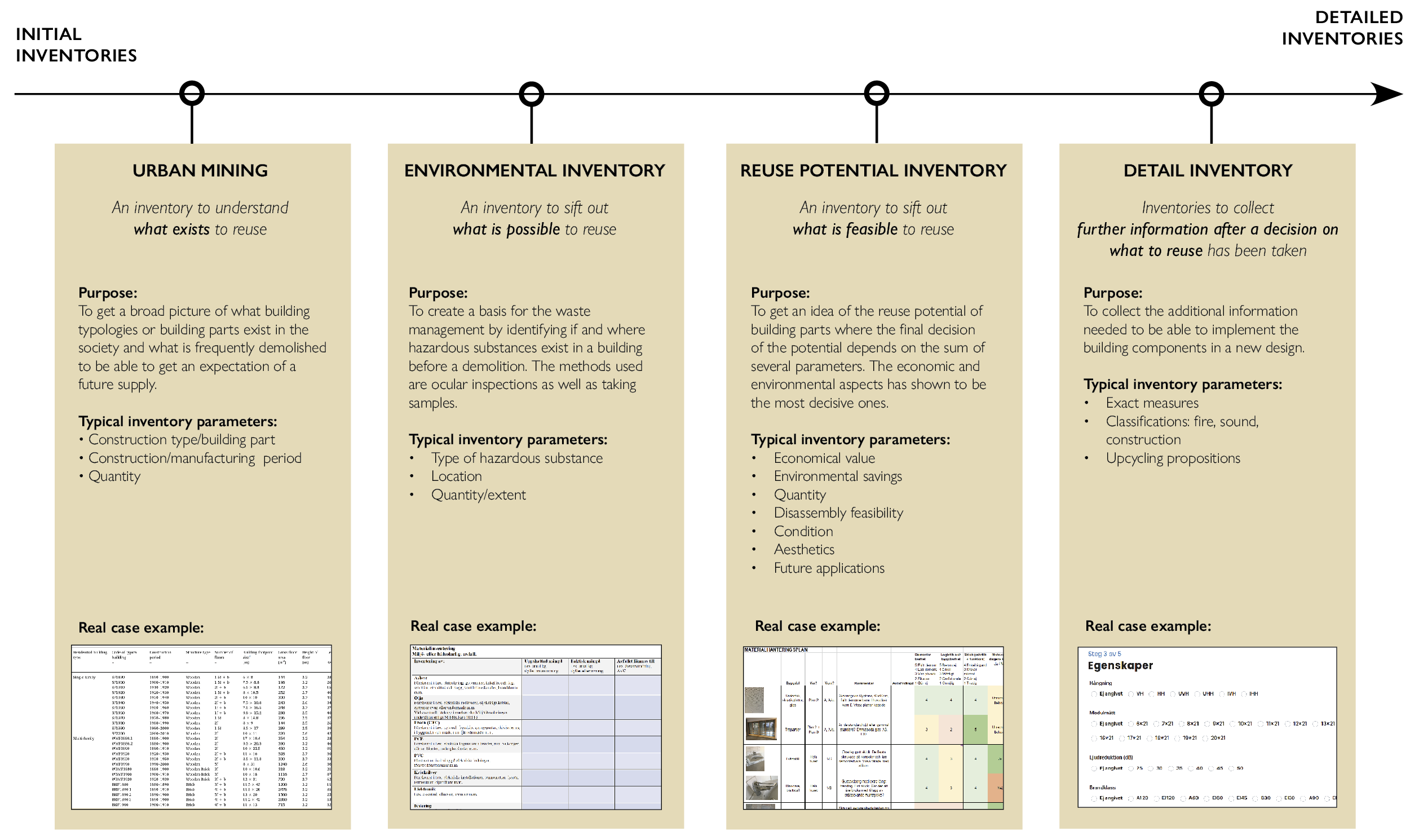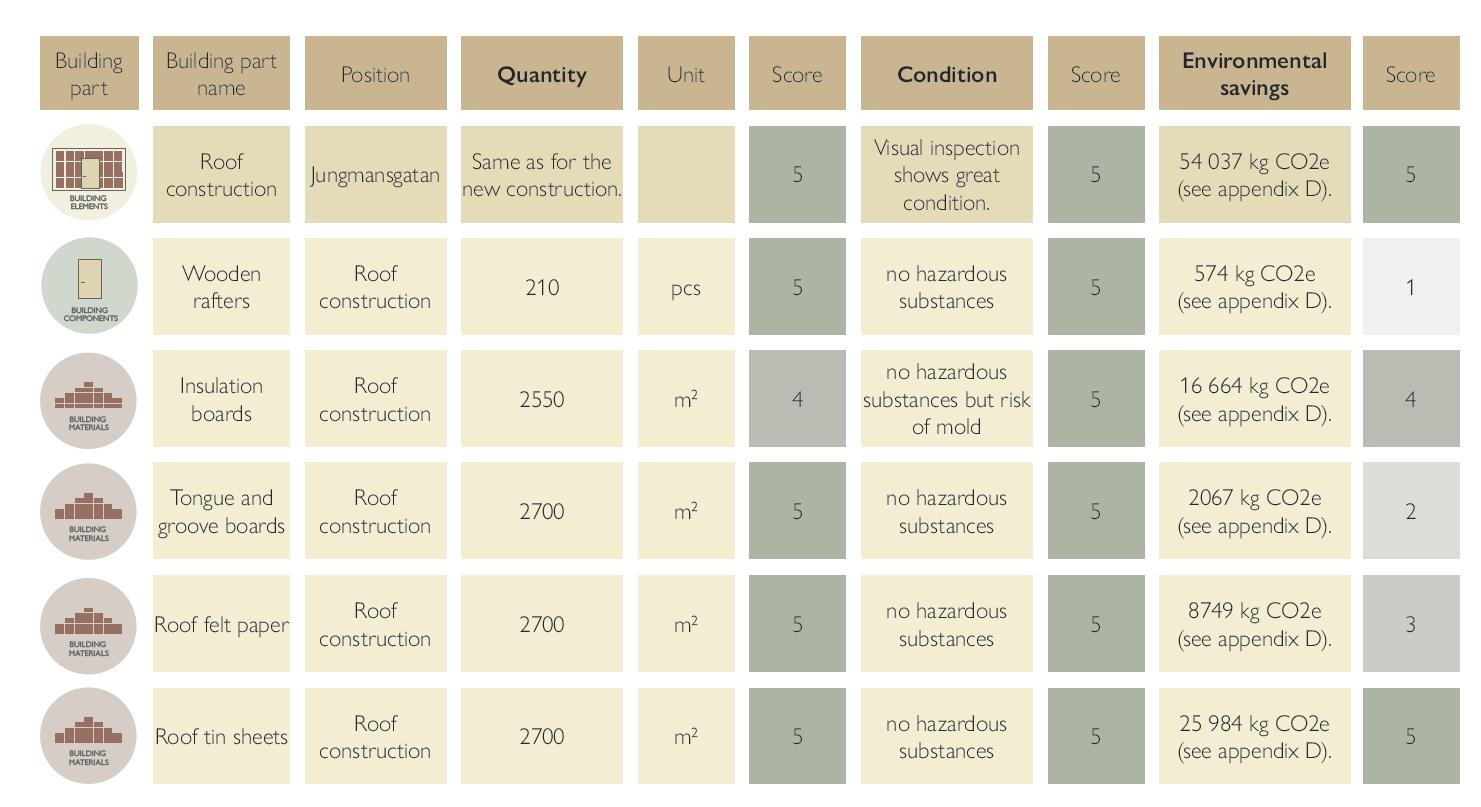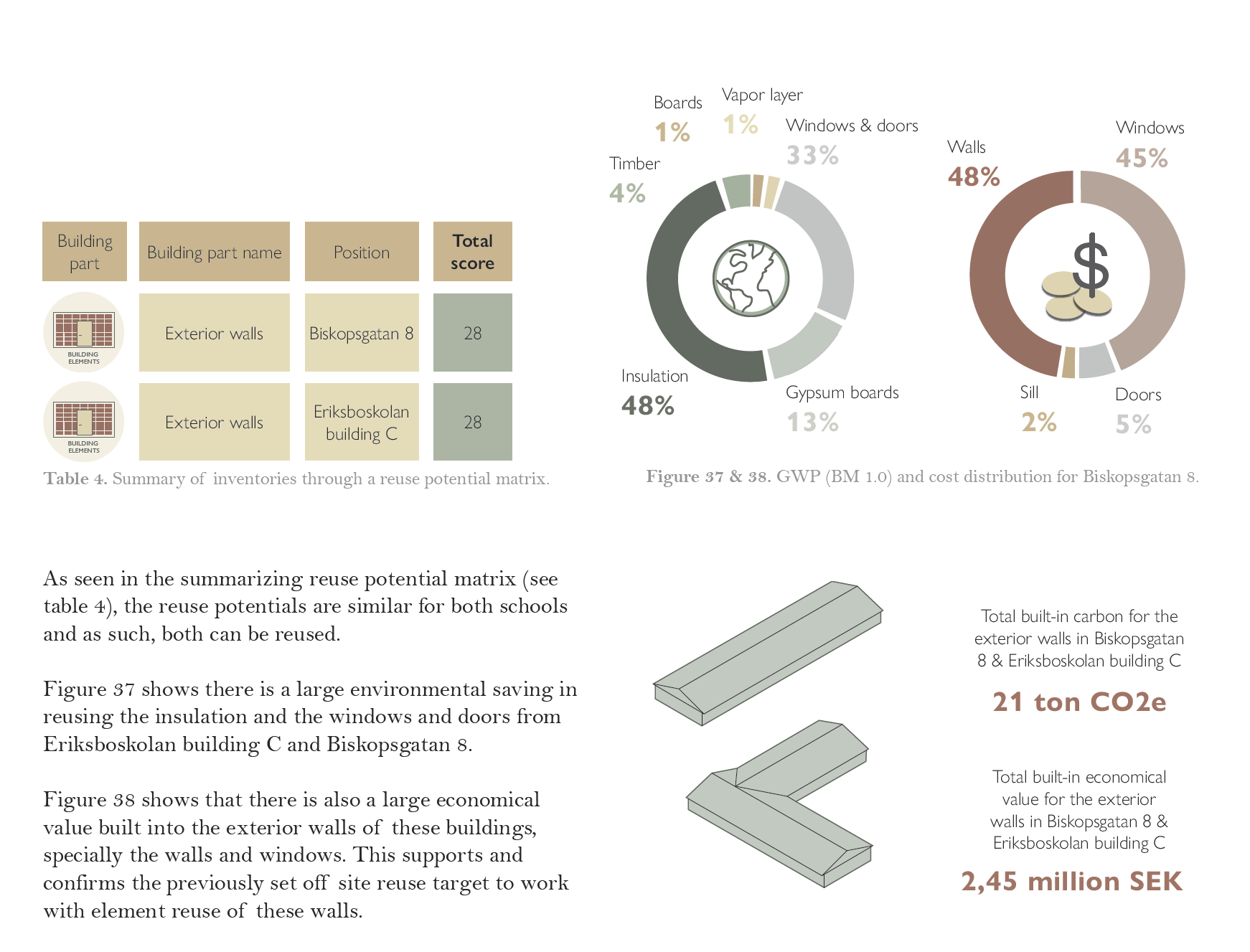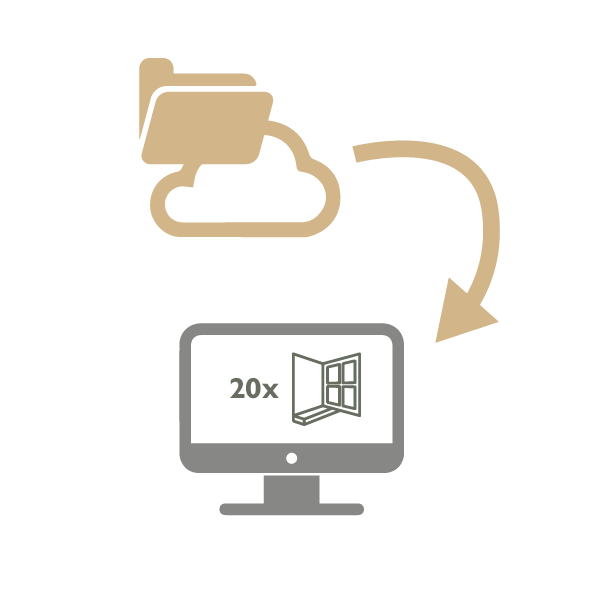Towards the industrial reuse process
BY Amilia Björklund & Maja Lindborg
Inventories
This thesis brings up the importance of making the inventory process interconnected as a precondition to reach industrial reuse. Four different kind of inventories are identified to serve for different purposes and should be followed by each other.


in the thesis to decide whether to reuse the existing roof or not.
An inventory contains a lot of information that can be difficult to get an overview of in its raw format. A reuse report summarising the most important findings from the inventory, including the use of visualisation elements, have proven efficient to keep the different stakeholders in the project informed.


One of the prerequisites identified to make the reuse process more industrial is the need to connect the information from the inventories. The information needs to be connected in-between the inventories themselves – to save time and work hours – but also connected to further usage in the building project, working in a BIM model. This requires compatibility – a standardised way of logging, organising and storing the data. Read about this in the topic about Information management.